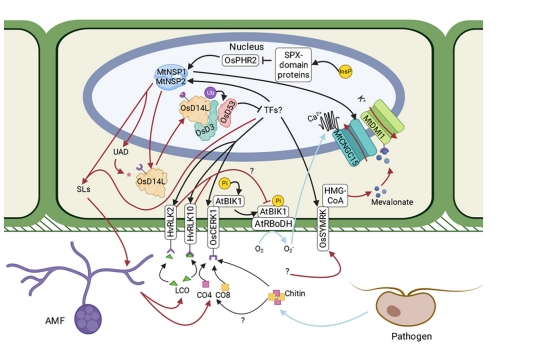The phosphate starvation response controls the release of strigolactones (SLs), which recruit arbuscular mycorrhizal (AM) fungus, and the detection of AM fungi.

After being converted into inositol phosphate (InsP), inorganic phosphate (Pi) can bind to SPX domain proteins and allow them to suppress PHR2 in rice [46,92]. In Medicago truncatula, PHR2 is active and stimulates NSP1 and NSP2 transcription when inorganic phosphate availability is low.
In rice, NSP1 and NSP2 activity stimulates strigolactone production. The exported strigolactones exert stimulatory effects on AM fungi in the rhizosphere [37, 38, 93]. An unknown apocarotenoid derivative (UAD), which functions as a ligand to rice D14L and allows it to form a Skp, Cullin, F-box (SCF) complex with D3, is probably also produced in conjunction with SLs [43, 52]. The transcriptional repressor D53/AtSMAX1 is targeted for proteasomal destruction by the D14L–D3 SCF complex, which ubiquitinates it.
Reference:
Li, X.R. et al. (2022) Nutrient regulation of lipochito oligosacchariderecognition in plants via NSP1 and NSP2. Nat. Commun. 13, 6421
